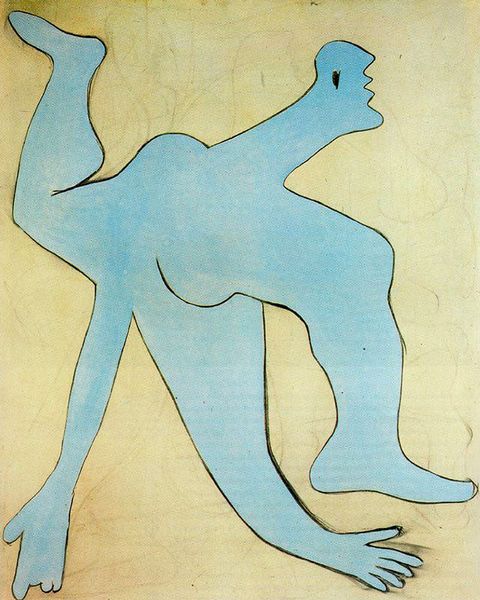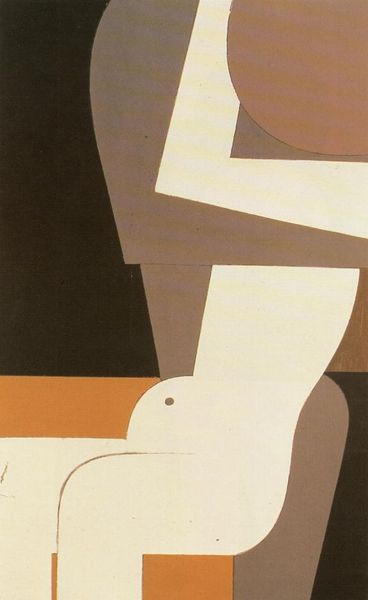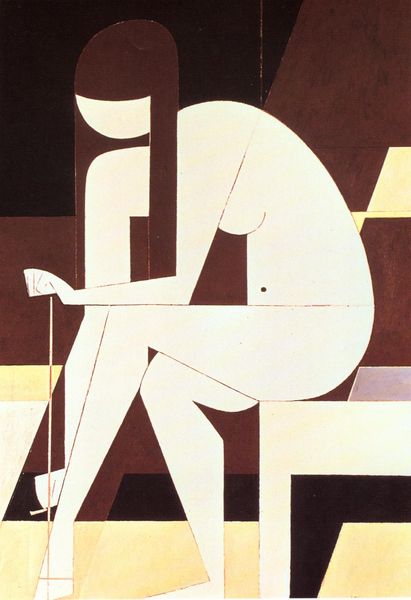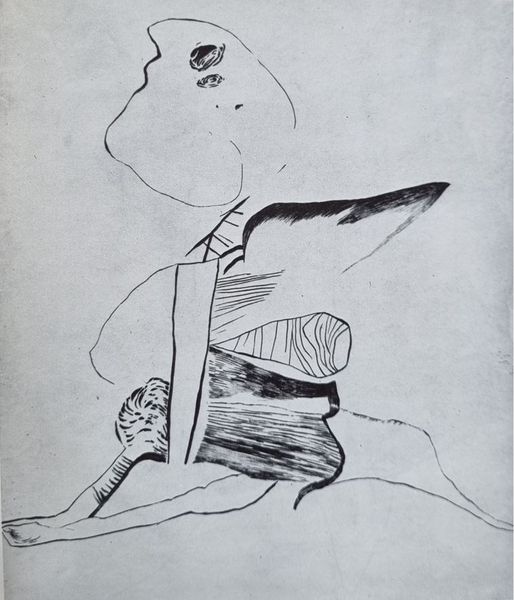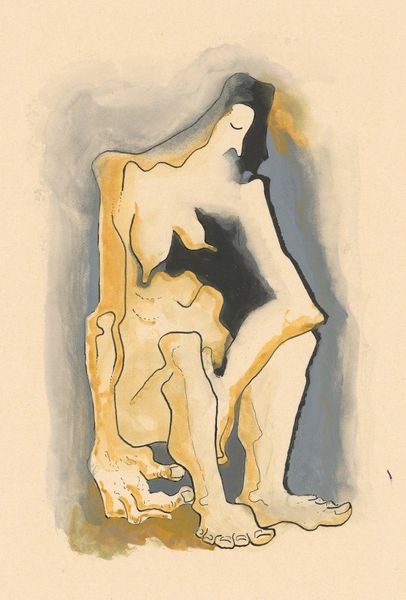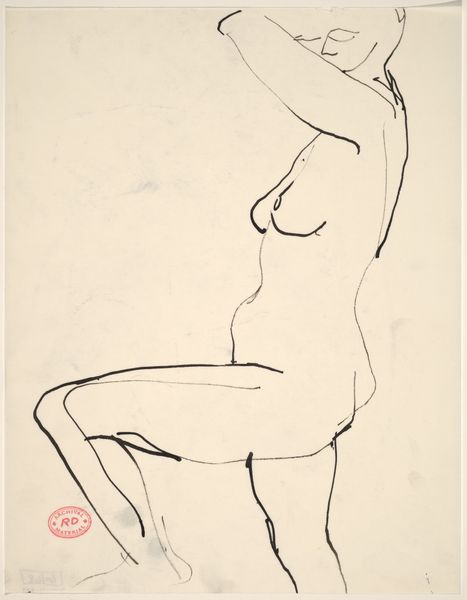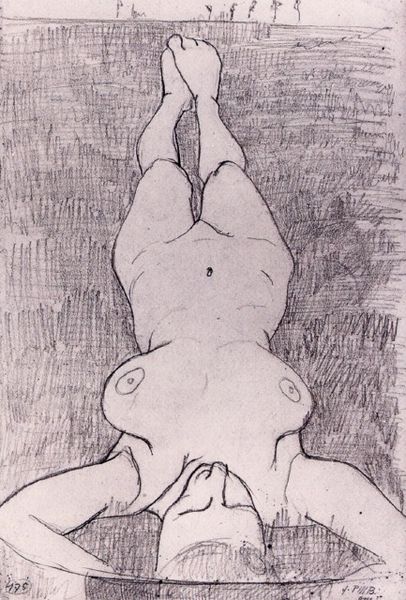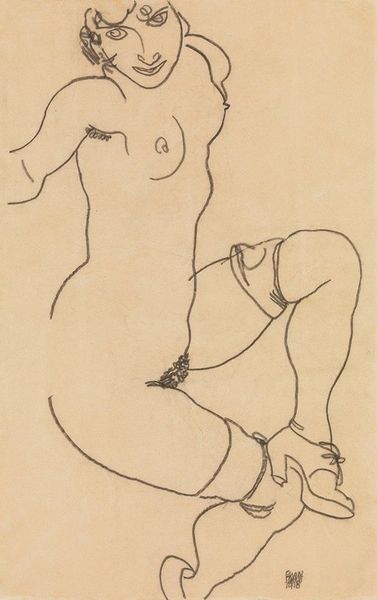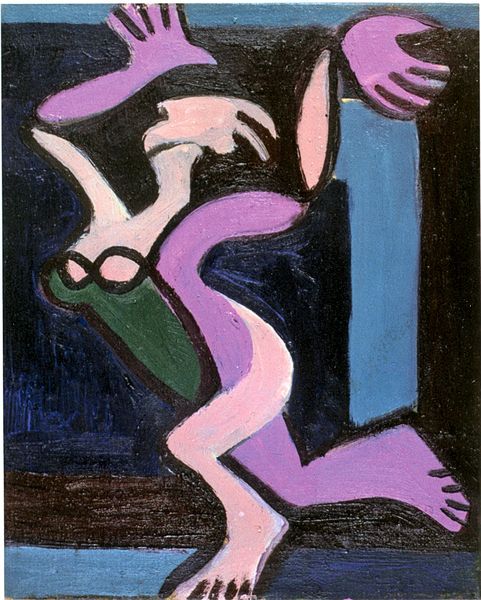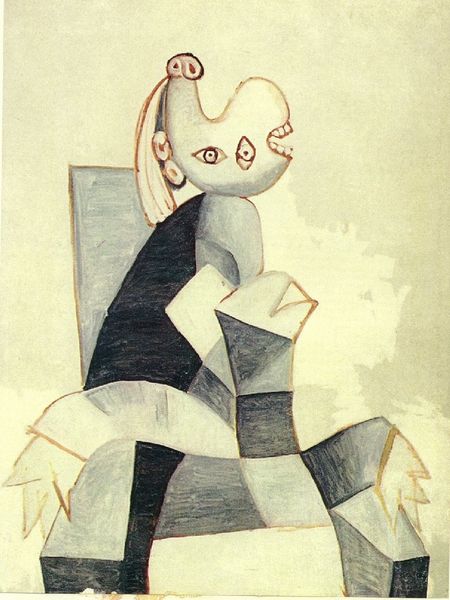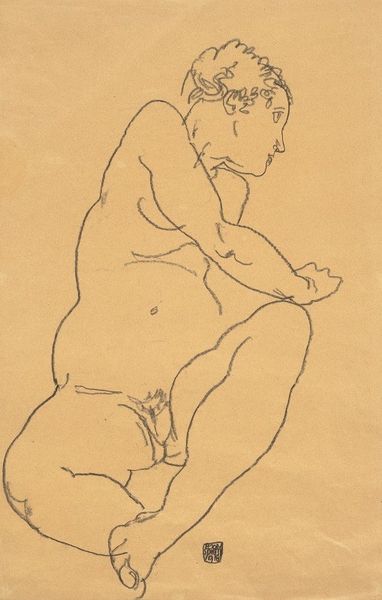
#
facial expression drawing
#
portrait reference
#
acrylic on canvas
#
muted green
#
animal drawing portrait
#
portrait drawing
#
facial portrait
#
portrait art
#
fine art portrait
#
digital portrait
Copyright: Pablo Picasso,Fair Use
Curator: Immediately, the pale figure against that near-violent violet pulls my attention. It's as if a contorted phantom struggles within the frame. Editor: Indeed, it is an arresting piece. We're looking at Picasso's "Acrobat," created in 1930. Currently, it resides at the Musée Picasso in Paris. The simplification of form is quite striking. Curator: Striking is an apt word. Look at the line work. Each contour, while seemingly simple, articulates a complex distortion of the human form. Consider the mirroring effect, how the body bends back upon itself creating a loop. Editor: The social context interests me most. 1930, the world teetering on the edge of economic depression and political upheaval, do you read this act of contortion as a reflection of societal strain? Picasso's circus performers, of course, often served as metaphors... Curator: Undoubtedly. However, one can consider the formal arrangement independent of historical placement, observe how the muted palette contributes to an overall sense of unease, the body itself is almost translucent, nearly disappears against its surrounding color. Semiotically, color creates mood, its structural composition embodies tension. Editor: But the artist's choice to depict the performer devoid of setting, floating against a suggestive but nondescript backdrop, surely this speaks to the displacement of labor prevalent during the period. Or even further, perhaps as an allegory of the artist and societal pressure and economic uncertainty... Curator: The "floating" quality to which you are alluding allows the viewer to perceive the composition as purely graphic, a study in line and shape. We see line defining form in the barest, essential way: reduced. Stripped down. The figure and the abstract ground on which it performs achieve an equal footing—or perhaps, non-footing. Editor: I concede that. Though I find it hard not to consider Picasso’s personal life, how he consistently refracts experiences from intimate, turbulent relations with muses in his canvases, his studio was located near a notorious circus at that moment... Curator: Precisely, we find a fascinating push-pull dynamic in this seemingly straightforward artwork. I come back to structure and expression. Editor: As do I with form and political content; both coexist in the narrative. Thank you for these elucidations, this helps create even greater appreciation of its complexity, the work.
Comments
No comments
Be the first to comment and join the conversation on the ultimate creative platform.
